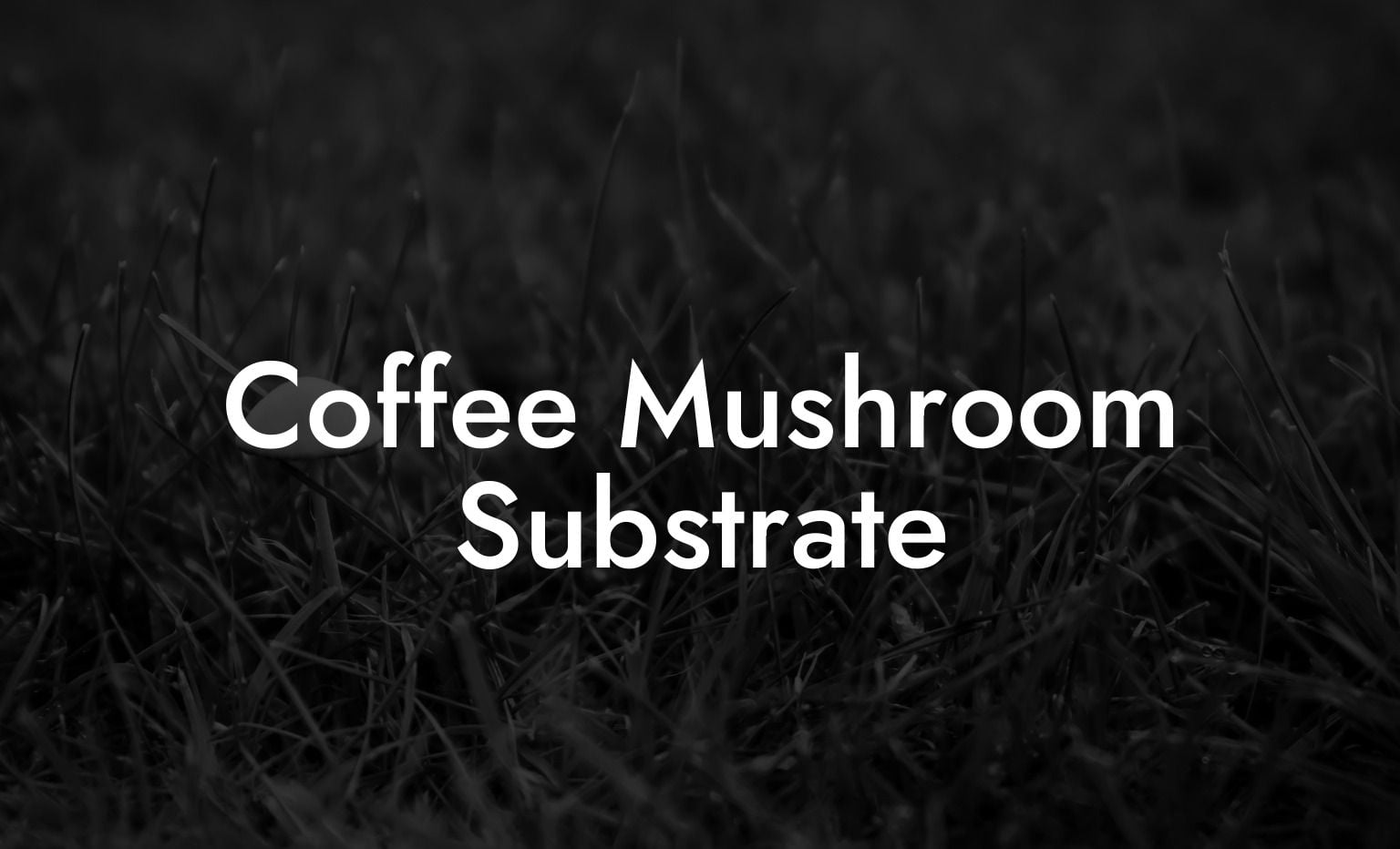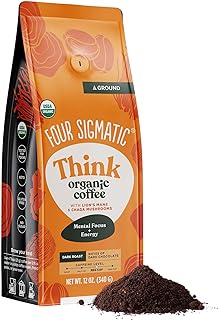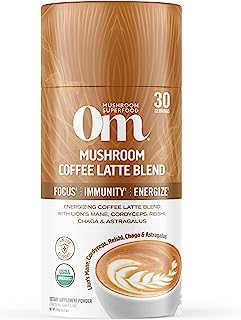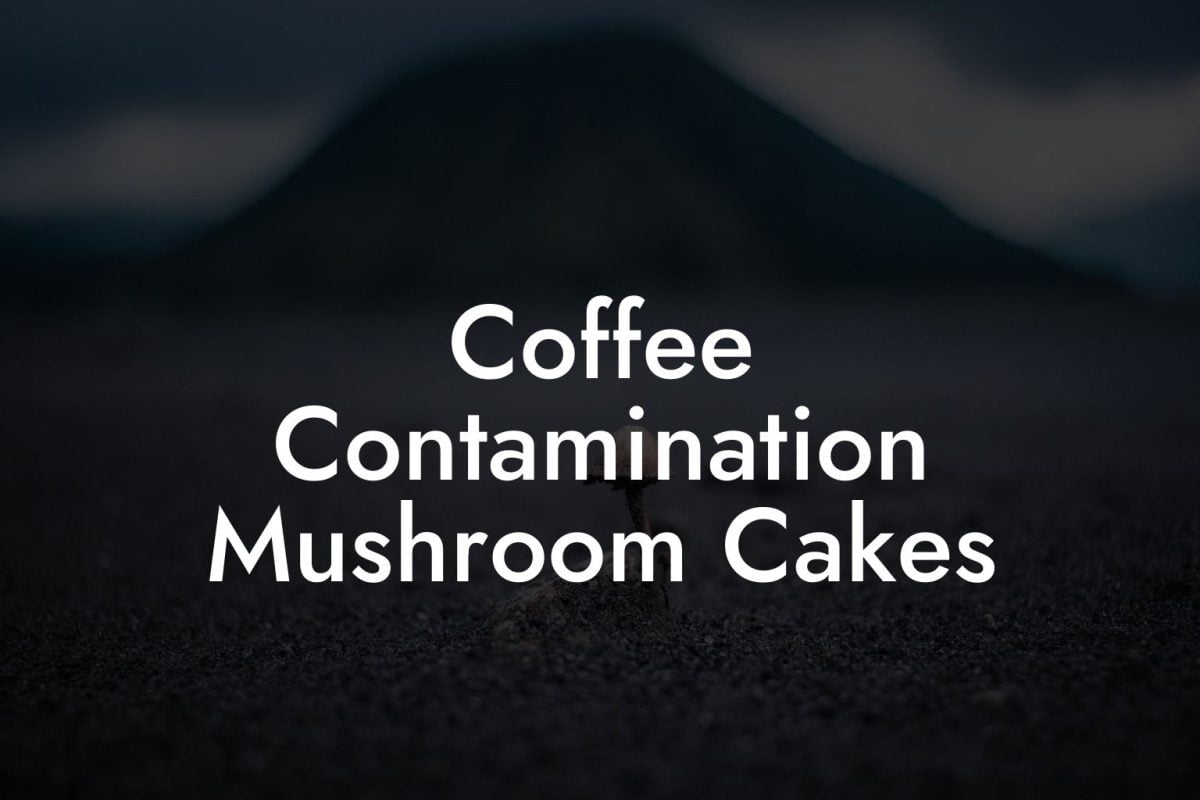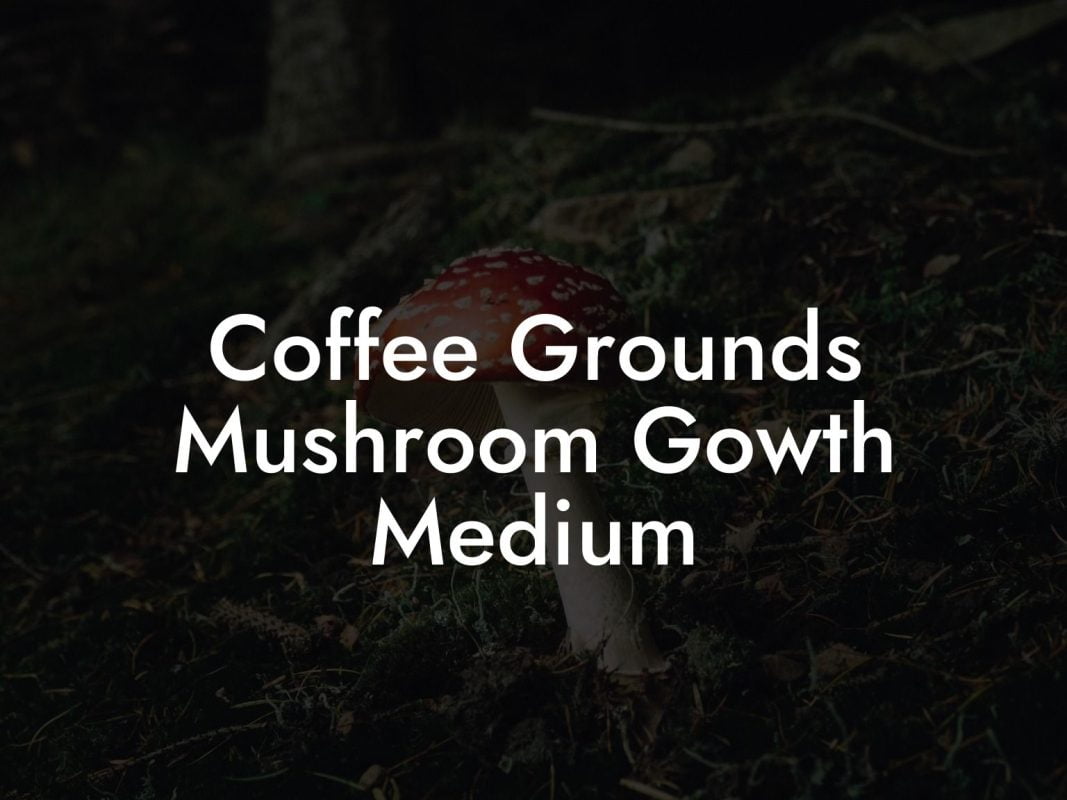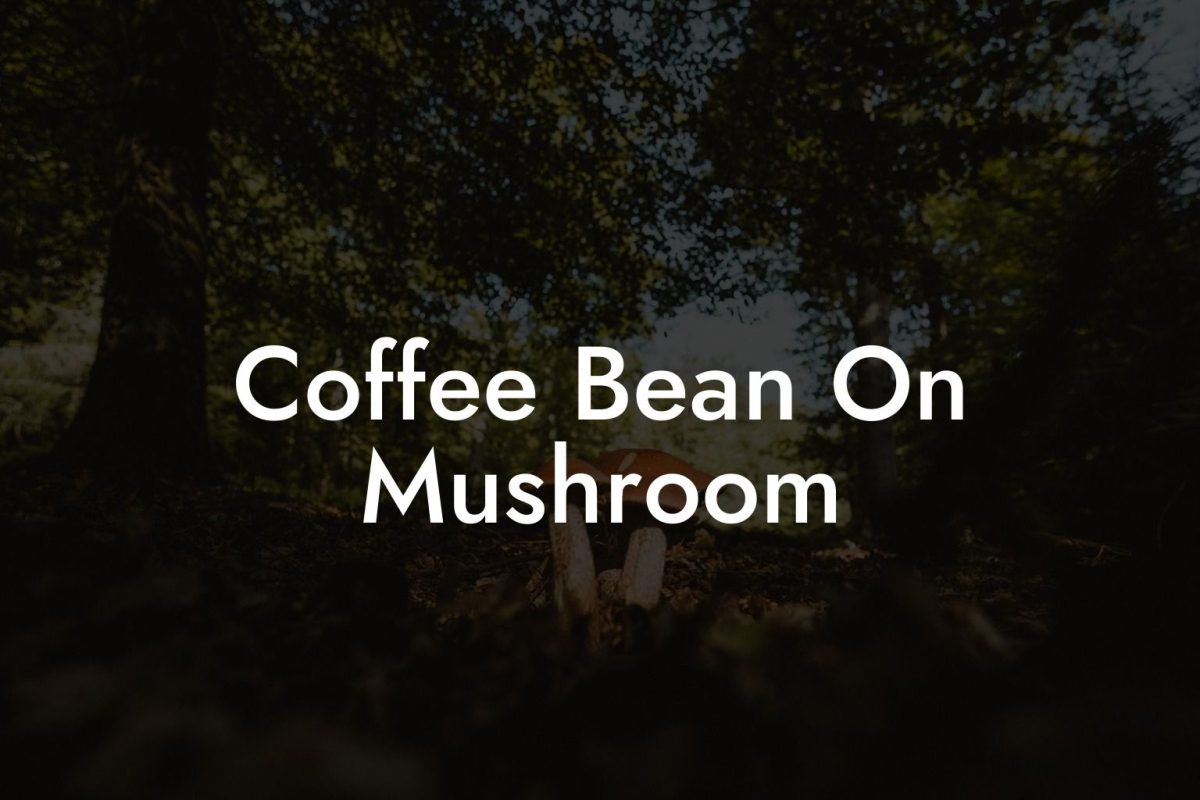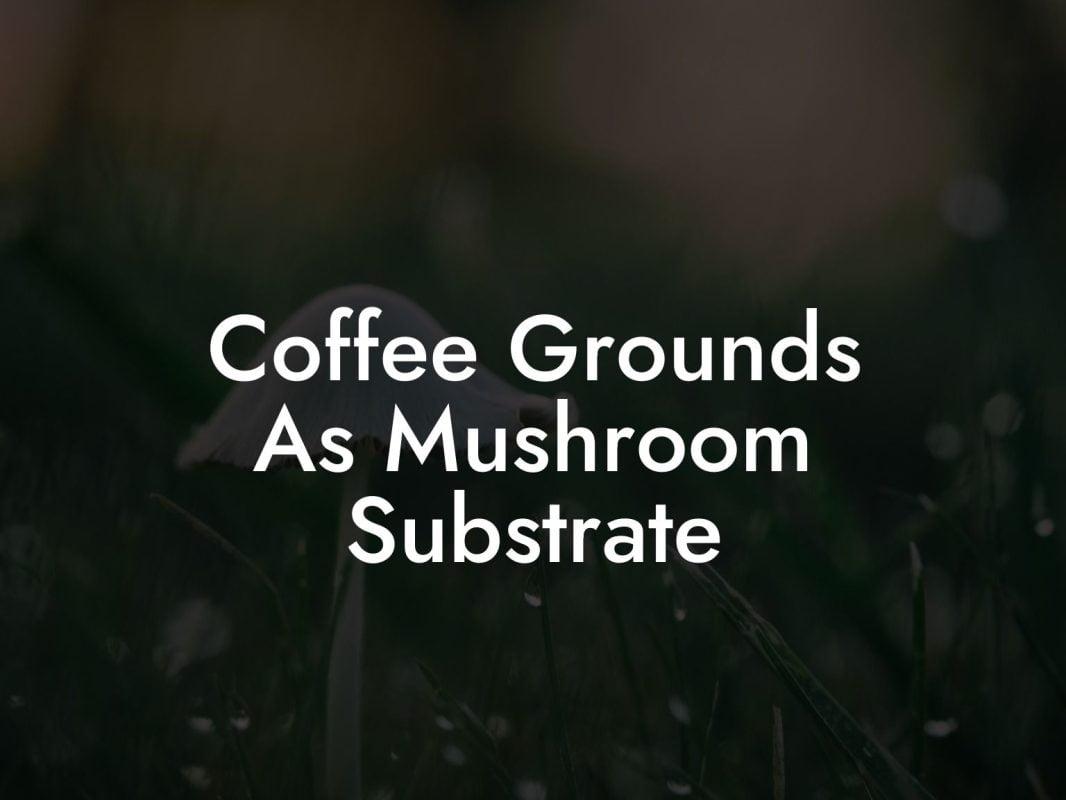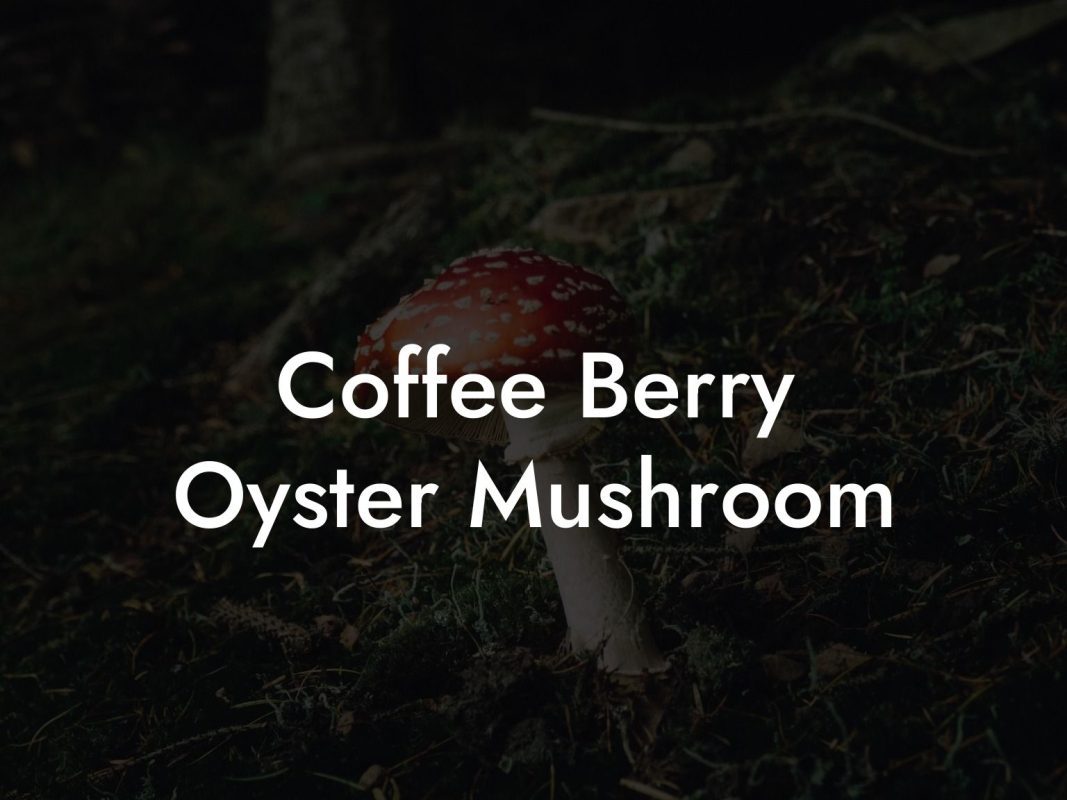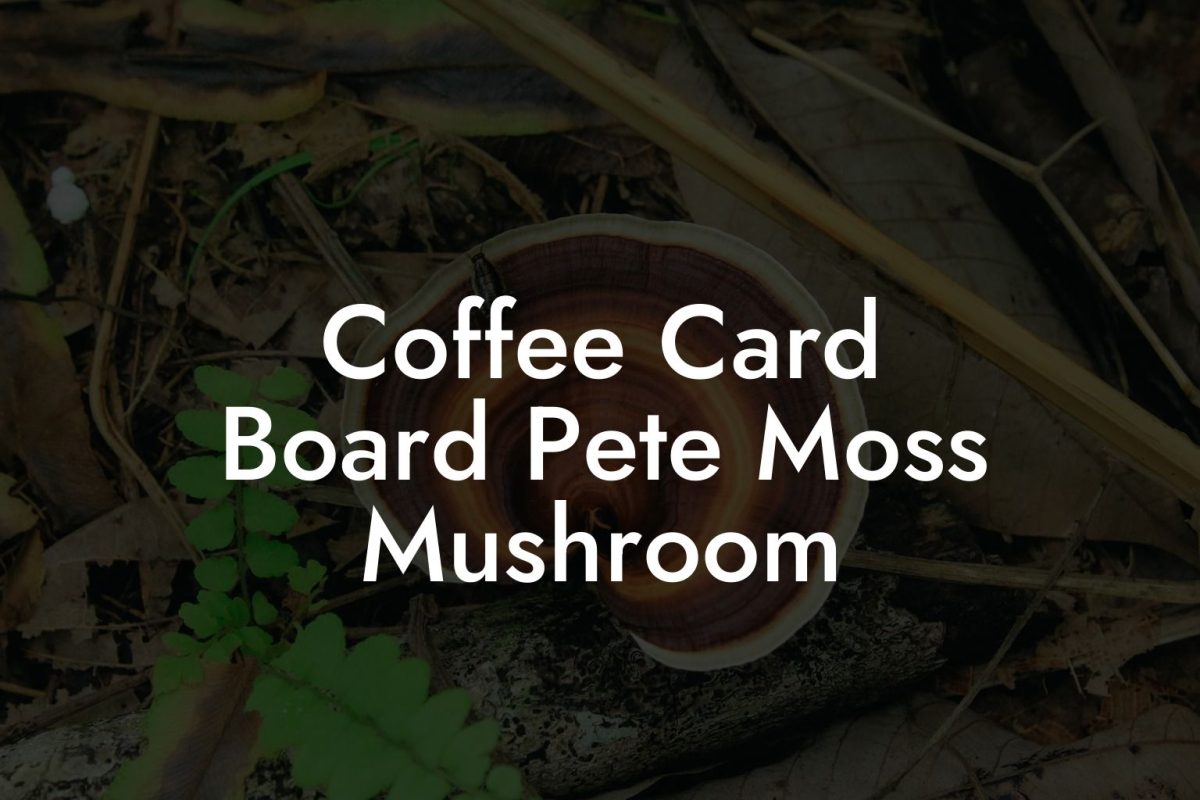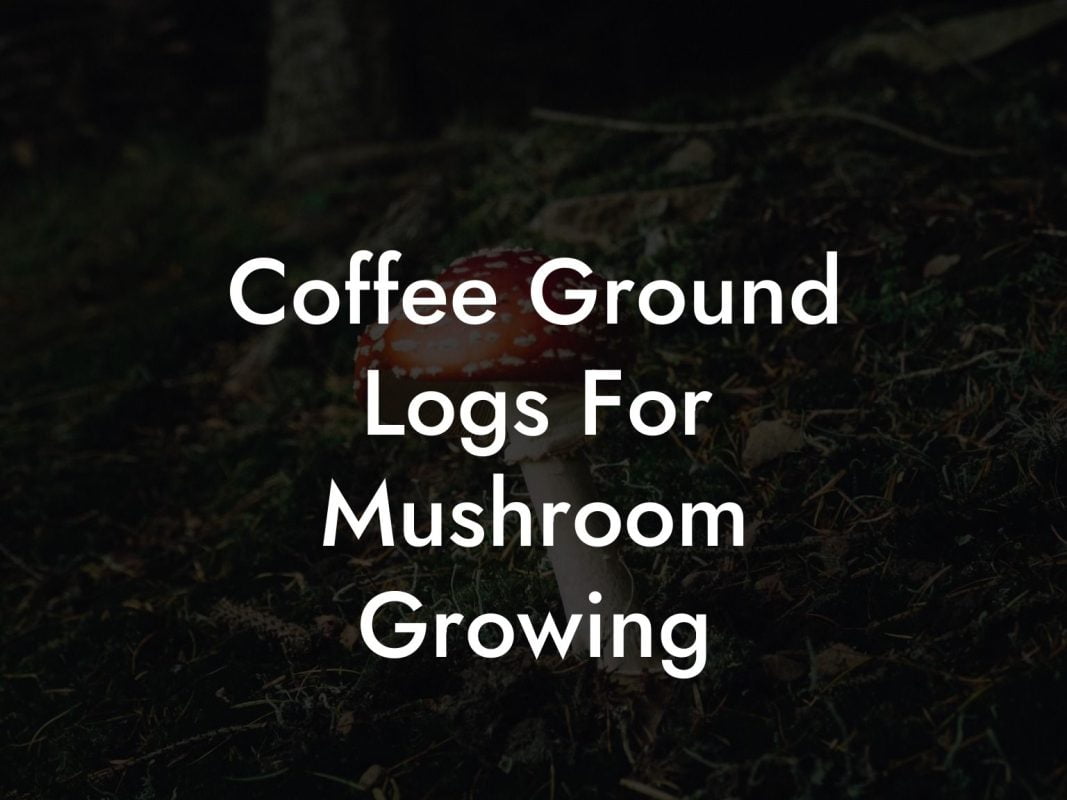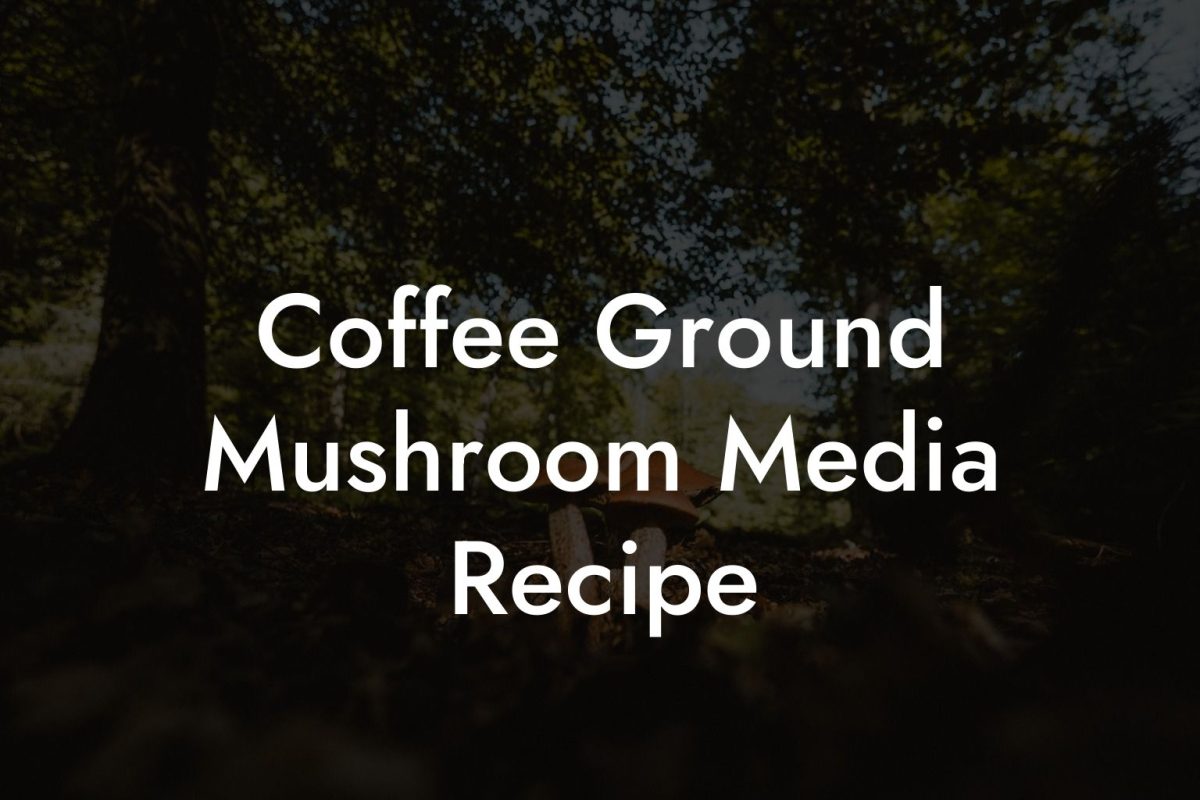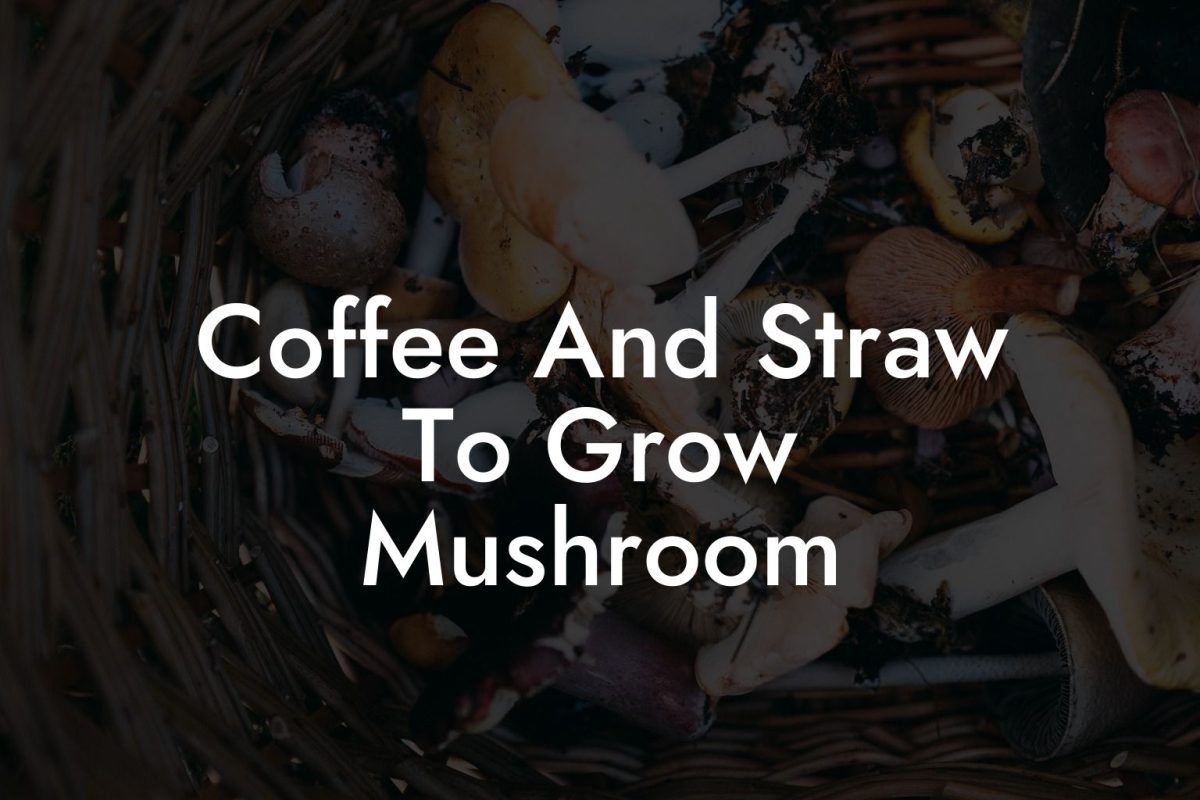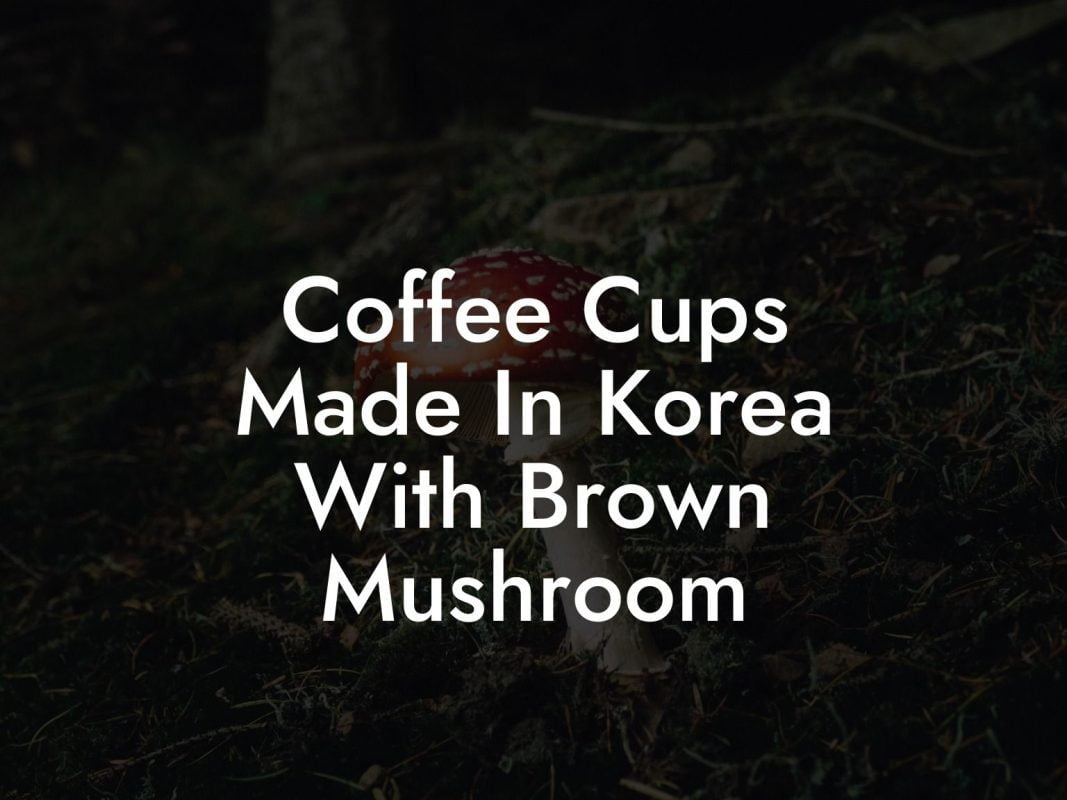Kick back, sip that artisanal brew, and get ready to dive into the wild world of Coffee Mushroom Substrate, a revolutionary, eco-savvy twist that takes your morning ritual to a whole new level. Imagine infusing your favorite coffee grounds with the vibrant life-force of mushroom mycelium, transforming spent beans into a powerhouse substrate for gourmet mushroom cultivation. Whether you’re a self-proclaimed eco-warrior, a mushroom coffee enthusiast, or just looking for a rad, sustainable gardening hack, this ultimate guide is here to spill the tea (or coffee) on everything you need to know.
Quick Links to Useful Sections
- Unpacking Coffee Mushroom Substrate: What’s the Buzz?
- Diving Into the Science: How Does It Work?
- Why Choose Coffee Mushroom Substrate? The Perks and Benefits
- Ingredients and Components: What Makes a Stellar Substrate?
- Coffee Grounds: The Nutrient Powerhouse
- Supplementary Materials
- Step-by-Step Guide: Creating Your Coffee Mushroom Substrate
- Step 1: Gather Your Materials
- Step 2: Preparing the Coffee Grounds
- Step 3: Mixing in the Supplementary Materials
- Step 4: Hydrate and Adjust pH
- Step 5: Inoculation with Mushroom Spawn
- Step 6: Incubation and Monitoring
- Step 7: Fruiting and Harvesting
- Exploring Mushroom Coffee: The Next-Level Brew
- The Science Behind the Blend
- How to Brew Your Mushroom Coffee
- Maximizing Your Substrate: Tips, Tricks, and Pro Hacks
- Integrating Technology: Tools to Enhance Your Mushroom Cultivation
- Recommended Tools and Apps
- Challenges and How to Tackle Them: Keeping It Real
- Innovative Uses Beyond the Kitchen: More Than Just a Brew
- Success Stories: Real-Life Journeys in Coffee Mushroom Cultivation
- Resources and Community Support: Your Next Steps
- Future Trends: Where’s the Journey Headed?
- Merging Sustainability, Flavor, and Innovation: A New Brew of Conscious Living
- Coffee Mushroom Substrate FAQs: Your Top Questions Answered
- Your Journey to a Sustainable, Flavor-Packed Future
Unpacking Coffee Mushroom Substrate: What’s the Buzz?
If you’re wondering, “What on earth is coffee mushroom substrate?” you’re in the right place. At its core, coffee mushroom substrate is an innovative, eco-friendly material created by blending used coffee grounds with other organic ingredients to serve as a growing medium for mushrooms. Picture it as a nutrient-packed spa for fungus, where the rich organic matter in coffee grounds fuels mycelium, the vegetative network behind every mushroom’s impressive fruiting body.
For Gen-Z and millennial eco-enthusiasts, this substrate isn’t just about cultivating mushrooms; it’s an exciting gateway into sustainable agriculture, urban farming, and even crafting your own artisanal mushroom coffee. Integrating coffee mushroom substrate into your creative projects not only reduces waste but also taps into the latest trends in organic gardening and alternative beverages.
This is more than just a gardening hack; it’s a movement that blends innovation with environmental responsibility, and it all starts in your favorite coffee cup.
Diving Into the Science: How Does It Work?
Let’s unpack the magic behind the process. When you brew your cup of joe, you’re left with used coffee grounds packed with nutrients like nitrogen, phosphorus, and potassium. These nutrients make the spent coffee grounds a near-perfect candidate for creating an organic substrate that fungi adore. When mixed with other materials like straw, sawdust, or coconut coir, coffee mushroom substrate becomes a rich, balanced medium that supports robust mycelium growth.
Looking For The Best Mushroom Coffee? You'll Love These:
The secret lies in the symbiotic relationship between the coffee grounds and mushroom species. The mycelium colonizes the substrate, breaking down the organic matter and converting it into energy, which eventually leads to the formation of mushrooms. This transformation is not only a natural recycling process but also a form of bioconversion where waste becomes resource. In a nutshell, it’s nature’s way of making sure nothing goes to waste, and that’s a vibe we can all get behind.
Combining coffee’s natural acidity with the high nutrient content creates a substrate that’s ideal for a variety of mushrooms, especially gourmet and medicinal strains. The process of colonization is carefully engineered by enthusiasts and urban farmers alike, ensuring the acid balance and moisture levels are perfect for an optimal fungal feast.
Why Choose Coffee Mushroom Substrate? The Perks and Benefits
When we talk about modern sustainability practices, the first thing that comes to mind is upcycling, and coffee mushroom substrate is the poster child for it. Here are some compelling reasons why you might want to start experimenting with this innovative medium:
- Sustainability and Waste Reduction: Transforming used coffee grounds into a valuable growing medium is a win-win situation. It reduces the burden on landfills while nurturing vibrant mushroom growth.
- Rich Nutrient Profile: Packed with organic compounds and enzymes, coffee grounds offer a fertile environment for mycelium, leading to a robust and resilient mushroom crop.
- Economic and Accessible: Coffee grounds are readily available, think local cafes, coworking spaces, or even your own home. This low-cost material makes mushroom cultivation accessible to beginners and pros alike.
- Versatility: Not only can you grow various gourmet mushrooms, but you can also dive into the burgeoning world of mushroom coffee. By harnessing the benefits of adaptogenic mushrooms, you can create a unique brew that’s both energizing and nourishing.
- Enhanced Flavor Profiles: Some mushroom cultivators even claim that the substrate can tweak the flavor of the mushrooms, lending subtle earthy and smoky notes that can elevate your culinary adventures.
Embracing coffee mushroom substrate isn’t just a nod to sustainability; it’s a forward-thinking approach that combines old-school composting techniques with modern agricultural science. It’s like giving your coffee a second life, and who wouldn’t want their daily brew to pack an extra punch of eco-coolness?
Ingredients and Components: What Makes a Stellar Substrate?
Crafting the perfect coffee mushroom substrate is a blend of art and science. While the foundation is built on used coffee grounds, a stellar substrate requires a harmonious mix of additional organic materials to create the ideal environment for mushroom growth.
Coffee Grounds: The Nutrient Powerhouse
The star of the show, used coffee grounds, are loaded with essential nutrients that fungi need. Rich in nitrogen, these grounds speed up the process of mycelial colonization while adding a unique flavor twist to your mushroom crop.
Supplementary Materials
To round out your substrate, consider adding:
- Straw or Hay: These provide structural integrity and help with water retention.
- Sawdust or Wood Chips: A great addition for certain mushroom species that thrive on lignin-rich substrates.
- Coconut Coir: Acts as a natural sponge, maintaining moisture while providing a light, airy texture.
- Other Organic Matter: Materials like rice bran, soybean hulls, or even compost can boost nutrient levels and enhance texture.
Combining these elements in the right ratios is key. Too many coffee grounds can make the substrate too acidic, while not enough structural materials might lead to poor aeration. Experimentation is part of the fun, think of it as creating your own signature blend.
For those interested in mushroom coffee, the precise balance of these components can also impact the final flavor and potency of your brew, reinforcing the importance of understanding the science behind your substrate.
Step-by-Step Guide: Creating Your Coffee Mushroom Substrate
Ready to roll up your sleeves? Here’s a down-to-earth, step-by-step approach to creating your own coffee mushroom substrate at home:
Step 1: Gather Your Materials
Before you start, make sure you have all the necessary ingredients on hand:
- Used coffee grounds (freshly brewed for best results)
- Supplementary materials (straw, sawdust, coconut coir, etc.)
- Clean water and a spray bottle for maintaining moisture
- Containers or bags for pasteurization (if needed)
- Sterilized tools, gloves, and a clean work area
Step 2: Preparing the Coffee Grounds
Start by collecting your coffee grounds and spreading them out to air dry for a few hours. This step prevents mold growth and ensures the substrate retains the right moisture level. If you’re feeling extra fancy, consider pasteurizing your mix with a brief steam treatment.
Step 3: Mixing in the Supplementary Materials
Combine your air-dried coffee grounds with your chosen supplementary materials. Aim for a balanced ratio, around 60% coffee grounds to 40% structural component is a good starting point. Adjust based on the specific needs of the mushroom species you’re cultivating.
This is where you get creative. For instance, if you’re targeting oyster mushrooms (a Gen-Z and millennial favorite), a mixture of coffee grounds and straw often yields spectacular results. For shiitake enthusiasts, a slightly different balance might be optimal.
Step 4: Hydrate and Adjust pH
Lightly moisten your mixture with clean water, ensuring it’s damp but not soaked. Proper hydration is crucial for mycelium to thrive. You can also tweak the pH with a small amount of lime or gypsum if your coffee grounds are overly acidic.
Step 5: Inoculation with Mushroom Spawn
Once your substrate is prepped, it’s time to introduce the star of the show: the mushroom spawn. Spread the spawn evenly throughout the substrate in a clean environment. This step requires a mix of precision and care, think of it as seasoning a fine dish.
Step 6: Incubation and Monitoring
Place your inoculated substrate in a dark, humid space, such as a modified plastic bag, container, or even a dedicated growing chamber. Maintain consistent temperature and moisture levels, typically between 65°F to 75°F (18°C to 24°C). Over the course of a few weeks, the mycelium will slowly colonize the substrate, creating a white, web-like network.
Step 7: Fruiting and Harvesting
Once the substrate is fully colonized, introduce fresh air and light to trigger fruiting. You’ll start to see tiny pinheads emerge, which eventually blossom into mature mushrooms. Harvest at your preferred maturity level to enjoy optimal flavor and texture.
Whether you're setting up a home lab or a mini urban farm on your balcony, this practical guide will help you kickstart a sustainable mushroom-growing adventure that not only redefines waste management but also brings gourmet mushroom coffee into the spotlight.
Exploring Mushroom Coffee: The Next-Level Brew
Let’s pivot to one of the hottest trends catching fire in urban cafes and Instagram feeds alike: mushroom coffee. What if we told you that your favorite morning brew could be supercharged with the adaptogenic magic of mushrooms? By using coffee mushroom substrate, you’re essentially bridging traditional coffee culture with modern mycology to create a beverage that’s as beneficial as it is flavorful.
Mushroom coffee infuses the energy boost of coffee with the health benefits of medicinal mushrooms like lion’s mane, reishi, chaga, and cordyceps. The result is a cup of joe that supports mental clarity, reduces inflammation, and promotes overall well-being, an ideal brew for the modern hustler who needs both focus and resilience.
The Science Behind the Blend
When you incorporate coffee mushroom substrate into your brewing process, a bit of fermentation magic happens. The beneficial enzymes and nutrients from the substrate work in tandem with mushroom compounds to create a symbiotic flavor profile that’s earthy, robust, and complex. Moreover, the adaptogenic properties of mushrooms can help balance the sometimes jittery effects of caffeine, promoting a smoother, more sustained energy release.
How to Brew Your Mushroom Coffee
Ready to mix up your own cup of this cutting-edge elixir? Here’s a quick rundown:
- Prepare Your Coffee Grounds: Use your favorite roast, ideally one that’s been cooled down after brewing.
- Infuse with Mushroom Extract: Mix in a high-quality medicinal mushroom extract with your coffee grounds.
- Brew as Usual: Whether you’re using a French press, drip machine, or cold brew method, combine the ingredients and let the flavors meld.
- Garnish and Enjoy: Top off with a dash of cinnamon or a drizzle of coconut milk for an extra layer of flavor.
The result? A cup of mushroom coffee that’s not only a feast for the senses but also a nourishing ritual to kickstart your day with intention and creative energy.
Maximizing Your Substrate: Tips, Tricks, and Pro Hacks
To truly level up your coffee mushroom substrate game, consider these insider tips and tricks that urban farmers and Gen-Z innovators swear by:
- Monitor Moisture Levels: Consistent humidity is key to preventing contamination and ensuring smooth mycelium colonization. Invest in a hygrometer to keep tabs on moisture levels.
- Temperature Matters: Keep your substrate incubating in a stable environment. A temperature-controlled space like a repurposed garage or dedicated growth tent can make all the difference.
- Clean as You Go: Sterilization is your secret weapon. Clean tools, surfaces, and even the air around your workspace to fend off unwanted bacteria and mold.
- Experiment with Ratios: Don’t be afraid to tweak the mix. Some mushroom strains may prefer a higher coffee-to-wood ratio, while others thrive in more balanced blends. Experiment and document your results.
- Network With Fellow Growers: Join online forums, social media groups, or local urban farming clubs. Sharing your experiences and learning from others can provide invaluable insights, shortcuts, and inspiration.
Embracing a culture of experimentation isn’t just about science, it’s about creativity. Treat each batch as a unique adventure, and celebrate the wins (and even the quirky missteps) along the way.
Integrating Technology: Tools to Enhance Your Mushroom Cultivation
In our tech-driven age, forget dusty old gardening manuals, today’s mushroom cultivators leverage advanced technology to optimize the growth process. Smart sensors, mobile apps, and even AI-driven monitoring systems are transforming the way we nurture coffee mushroom substrate. These tools can help track temperature, humidity, and pH levels in real time, giving you precise control over your growing environment.
For the digital native Gen-Z and millennial crowd, integrating technology into your cultivation process isn’t just practical, it’s part of the fun. Imagine getting push notifications when your substrate’s perfect for inoculation or when it’s finally ready for fruiting. It’s like having a personal assistant for your urban farm!
Recommended Tools and Apps
- Environmental Monitors: Devices that track humidity and temperature can ensure that your substrate is in the optimal zone for mycelium growth.
- pH Meters: A digital pH meter is an inexpensive gadget that can make a big difference in maintaining the right acidity for your substrate.
- Urban Farming Apps: Platforms such as GrowIt! or Mushroom Manager allow you to log your experiments, share tips with a community of fellow growers, and even get expert advice.
- Smart Lighting: For indoor setups, consider smart LED systems that mimic natural light cycles, further boosting the fruiting process.
These technologies transform coffee mushroom substrate cultivation into a precise, data-driven, and even more enjoyable process, perfect for modern growers who live at the intersection of tradition and tech.
Challenges and How to Tackle Them: Keeping It Real
Even the most passionate urban farmers face challenges when working with organic substrates like coffee mushroom substrate. But guess what? Every hiccup is a learning opportunity!
Contamination: One of the top concerns in mushroom cultivation is contamination from unwanted bacteria or molds. The key is maintaining a sterile environment during inoculation and incubation. If you do spot contamination, isolate the affected area immediately and adjust your sterilization protocols.
Inconsistent Moisture: Too much moisture can lead to soggy, anaerobic conditions, while too little will stunt mycelium growth. Regular monitoring with a hygrometer, combined with timely misting, can keep things in balance.
Temperature Fluctuations: Mushrooms are finicky about temperature. Use a heating mat or cooling system if necessary to keep your growing space within the ideal range.
Learning Curve: Don’t sweat it if your first batch isn’t perfect. Urban farming and mushroom cultivation come with a learning curve, so document your process, adjust your methods, and join online communities to glean tips and support from fellow enthusiasts.
Remember, every misstep brings you closer to mastering the art of coffee mushroom substrate, proving that growth, whether mycelial or personal, is all about experimentation and resilience.
Innovative Uses Beyond the Kitchen: More Than Just a Brew
When you think of coffee and mushrooms, the first thought might be an upgraded cup of coffee. But coffee mushroom substrate has versatile applications that extend beyond the culinary and into realms like bioremediation, natural textiles, and even educational DIY projects.
For example, some creative minds are using the substrate as a sustainable packaging material, capitalizing on its biodegradable properties. Others are incorporating it into art installations or eco-friendly home decor projects. The substrate’s natural aesthetic and textural quality make it a unique and skillfully repurposed material.
In the realm of bioremediation, mushrooms grown on coffee substrates have demonstrated an ability to break down pollutants, turning industrial waste cleanup into a natural, organic process. It’s a testament to the limitless potential when nature and ingenuity collide.
Ultimately, exploring innovative uses for coffee mushroom substrate is a journey that blurs the lines between art, science, and sustainability, a perfect recipe for fueling creativity in a Gen-Z and millennial mindset.
Success Stories: Real-Life Journeys in Coffee Mushroom Cultivation
Nothing brings a concept to life like hearing real-world success stories. Meet Jamie, a young urban dweller who turned his small apartment balcony into a thriving, eco-friendly mushroom farm using repurposed coffee grounds. With determination, a bit of trial and error, and a commitment to sustainable living, Jamie’s experiment not only reduced his environmental footprint but also yielded a steady stream of gourmet mushrooms, and even a delicious twist on mushroom coffee.
Then there’s Alex, a millennial budding entrepreneur who launched a startup around artisanal mushroom coffee. By mastering the delicate balance of coffee mushroom substrate, Alex transformed a common waste product into a high-demand health beverage. The venture quickly caught the eye of local cafes and health food stores, sparking a mini-revolution in the way we think about coffee.
These stories, among many others, prove that with a little creative flair and technical know-how, coffee mushroom substrate can be a game changer, reminding us that sustainability and innovation are the perfect pair.
Resources and Community Support: Your Next Steps
Ready to join the movement? There’s a whole community of innovators, urban farmers, and mushroom enthusiasts waiting to share tips, troubleshoot issues, and celebrate your successes. Here are some powerful resources to get you started:
- Online Forums and Social Media Groups: Platforms like Reddit’s r/Mycology and Facebook Groups dedicated to urban farming are treasure troves of firsthand advice and lively discussions.
- Workshops and Webinars: Look out for local workshops, urban farming meetups, and online webinars hosted by leading mycologists and sustainability experts.
- DIY Guides and Blogs: Websites like FreshCap Mushrooms, North Spore, and mycological blogs provide in-depth guides, troubleshooting tips, and inspiring case studies.
- Local Cafés and Urban Farms: Many cafes and community gardens have embraced the coffee mushroom substrate revolution. Connect with them to learn, collaborate, or even arrange tours.
- Educational Courses: Several universities and online platforms offer courses in sustainable agriculture and mycology. These courses can provide a structured deep dive into the fascinating science behind coffee mushroom substrate.
Embrace the journey, share your experiments on Instagram or TikTok, and use hashtags like #CoffeeMushroomMagic, #UrbanFarming, and #SustainableBrews to join the global conversation. Community support not only enriches your experience but also fuels the collective innovation that drives this eco-friendly revolution.
Future Trends: Where’s the Journey Headed?
If you thought the current applications of coffee mushroom substrate were impressive, just wait for what the future holds. Research is rapidly expanding into new frontiers, from biotech innovations to eco-friendly materials engineering. The quest for sustainable substrates is opening doors to potential breakthroughs in:
- Renewable Packaging: Scientists are exploring how mycelium-based materials can replace traditional plastics in packaging, making everyday products more environmentally friendly.
- Natural Pesticides and Fertilizers: Mycelium’s ability to produce bioactive compounds is being harnessed to develop organic alternatives to chemical pesticides, reinforcing a cycle of natural sustainability.
- Urban Agriculture Integration: As cities become smarter and greener, integrating urban farming setups that use coffee mushroom substrate could redefine local food production systems.
- Health and Wellness Innovations: The rise of mushroom coffee and other functional foods heralds a new era of nutraceuticals where health money meets gourmet experiences.
The next wave of innovation will likely focus on combining sensor technology, data analytics, and even AI to create ultra-precise growing environments. Imagine a future where your coffee maker is connected to your mushroom incubator via an app, a seamless integration of nature and tech that speaks directly to the innovative spirit of modern millennials and Gen-Zers.
Merging Sustainability, Flavor, and Innovation: A New Brew of Conscious Living
Coffee mushroom substrate is more than just a trendy project, it’s a symbol of a new era in sustainable living. Marrying the robust flavors of coffee with the transformative potential of mushrooms not only drives a healthier environment but also inspires a lifestyle that values creativity, resourcefulness, and mindful consumption.
Whether you’re a seasoned urban farmer, an aspiring entrepreneur in the mushroom coffee space, or simply a curious soul looking for creative ways to reduce waste, remember that every cup of coffee can spark a revolution. By embracing coffee mushroom substrate, you’re not only crafting a weapon against environmental waste but also innovating in ways that merge the art of flavor with the science of sustainability.
Take a leap into this dynamic sphere, experiment with different blends, share your creative journey online, and be part of a community that values both the planet and personal well-being. After all, every innovative step you take is a step towards a healthier, more sustainable world.
So, grab your favorite mug, dust off those used coffee grounds, and set out on an adventure that transforms not only your coffee routine but also your perspective on sustainability. Let the journey of curiosity, flavor, and conscious innovation begin!
Coffee Mushroom Substrate FAQs: Your Top Questions Answered
Here’s a handy FAQ section to clear up some common queries about coffee mushroom substrate and its thrilling applications in mushroom cultivation and mushroom coffee.
1. What exactly is coffee mushroom substrate?
Coffee mushroom substrate is a nutrient-rich growing medium created by combining used coffee grounds with supplementary organic materials like straw, sawdust, or coconut coir to promote the growth of mushroom mycelium.
2. Can I use any type of coffee grounds?
It’s best to use used coffee grounds that haven’t been sitting around for too long. Freshly brewed, cooled coffee grounds work best, while avoiding grounds that have turned moldy.
3. What types of mushrooms typically grow on this substrate?
Gourmet mushrooms such as oyster mushrooms, shiitake, and even some medicinal strains tend to respond well to coffee mushroom substrate. However, experimenting with different species is part of the fun!
4. How does mushroom coffee differ from regular coffee?
Mushroom coffee blends traditional coffee with medicinal mushroom extracts, offering health benefits like enhanced focus, reduced inflammation, and a balance of energy that smooths out typical caffeine jitters.
5. Is contamination a common risk when using coffee grounds?
As with any organic substrate, contamination can be a risk if proper sterilization and maintenance procedures aren’t followed. Keeping your work area clean and monitoring moisture levels is key.
6. Can I grow coffee mushroom substrate indoors?
Absolutely! Many urban growers successfully cultivate mushrooms indoors using this substrate; just make sure to control temperature, humidity, and light exposure for optimal mycelium growth.
7. Are there any specific safety precautions I should take?
Maintaining a sterile environment during the inoculation and incubation phases is crucial. Use sterilized tools, gloves, and, if possible, work in a dedicated clean space to prevent contamination.
8. How do I know when it’s time to harvest the mushrooms?
Keep an eye on the size and appearance of the mushrooms. When the caps are fully expanded and before the edges start to curl, it’s typically the ideal time to harvest.
9. Can I use coffee mushroom substrate for educational purposes?
Definitely! It’s an excellent project for science classes, DIY workshops, or just as a fun experiment for anyone interested in sustainable practices and mycology.
10. Where can I find more resources or join a community of growers?
Plenty of online forums, urban farming groups, and mycological societies exist where you can connect with other enthusiasts. Check out platforms like Reddit’s r/Mycology or local urban farming workshops.
Your Journey to a Sustainable, Flavor-Packed Future
Coffee mushroom substrate is more than just a trendy sustainable hack, it’s a vibrant merging of nature, technology, and innovative spirit. Whether you’re cultivating gourmet mushrooms for your next artisanal brew, or experimenting with new ways to reduce waste and enhance urban living, every step you take is a tribute to creativity and environmental mindfulness.
Embrace this trend with enthusiasm and a curious heart. Experiment with ratios, share your successes and learnings on social media, and join a growing community of forward-thinkers who believe that sustainability should never be boring. Every batch of substrate you create, every mushroom that blooms, is a small victory for our planet and a bold statement for your lifestyle.
So, are you ready to transform your daily coffee ritual into a celebration of innovation and eco-conscious living? Step into the world of coffee mushroom substrate and experience a fusion of flavor, function, and futuristic living, one that empowers you to lead your life and your community towards greener, more sustainable horizons.
The journey is long, the process experimental, and the rewards are manifold. Here’s to embracing a lifestyle that’s as nourishing for you as it is for the planet. Your eco-friendly, flavor-packed future starts now, brew it, grow it, and let the green revolution spill from your cup!
Looking For The Best Mushroom Coffee? You'll Love These:
Useful Interruption: Dive deeper into the world of Mushroom Coffee with our most popular sections. If there is anything you think is missing or anything you would love for us to write about, just give us a shout.
- Mushroom Coffee Equipment & Product Reviews
- Mushroom Coffee Recipes & Creative Variations
- Mushroom Coffee Guides & Troubleshooting
- Mushroom Coffee Brewing & Preparation Techniques
- Model Rocket Advanced Rocketry & Innovations
- Mushroom Coffee Fundamentals
- Model Rocket Equipment Reviews & Digital Tools
- Mushroom Coffee Health Benefits & Wellness
- Mushroom Coffee Mycology & Scientific Insights
- Mushroom Coffee Community, Lifestyle & Engagement
I tried mushroom coffee this morning and told my friend, "This brew is spore-tacular!" He shot back, "Guess that's why it's such a cap-tivating way to kickstart your day!"

